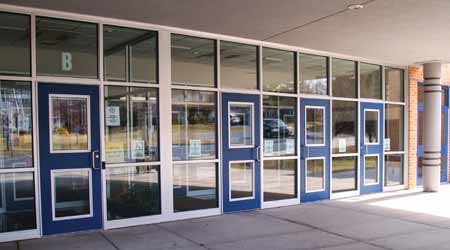 Door locks and hinges can only perform as intended if managers implement a comprehensive programs designed to ensure reliable and efficient operation.
Door locks and hinges can only perform as intended if managers implement a comprehensive programs designed to ensure reliable and efficient operation.Ensuring Door Hardware Performs as Intended
Managers who implement a comprehensive program of of inspection and testing can ensure door hardware performs as intended.
To ensure door hardware components perform as intended, managers need to develop and implement a comprehensive program of inspection and testing. Knowledge of the ANSI/BHMA A156 door hardware standards that cover more than 15 types of hardware is essential to ensure this program’s success.
ANSI specifies that these standards must be reviewed on a mandatory five-year cycle and revised when there is sufficient reason, such as more robust design or safety or security concerns. Manufacturers also can request a committee review and revision.
One example of this process involved revisions to BHMA A156.10 Power Operated Pedestrian Doors. This standard applies to swinging, sliding and folding pedestrian and small vehicle doors that open automatically or by a knowing act — a user activating a door control switch. This standard has been revised six times between 1979 and 2017 to remain relevant.
Revisions can cover products, methods and materials. Included in the 2017 revisions are provisions designed to reduce the chances of injury or entrapment. Dimensions, tolerances and layouts are parts of the reviews and are included in the final revision document.
To plan an effective preventive maintenance (PM) program, a planner can schedule maintenance activities similar to those in the example below. Routes are arranged to minimize travel, and the technician uses a checklist as a guide. In the example, a daily checklist for a revolving door contains general checks, activation checks, and safety checks, in addition to checks of the diagnostic software for trouble signs.
General PM includes: checking weather stripping for loose or hanging pieces that could become a trip hazard; removing debris; checking for obstacles in the traffic path; tightening push bar door frame fasteners; and visually inspecting glass for chips or cracks.
Activation checks include: activating motion sensors for proper operation; verifying stop time as set at the factory; and verifying detection areas by walking parallel to traffic in front of the door.
Checks of safety components should cover the emergency stop, the handicap button, the entry point, the end wall, the corner post, the overhead wing, and bottom edge and leading-edge sensors. Technicians should perform all checks from the interior and exterior sides, and all of the sensors and buttons should operate as set in the factory. Technicians should repair all defects on the spot, or write them on the checklist for priority follow-up.
Many exterior and interior doors provide fire protection, so technicians should perform added checks and maintenance to cover this door function following National Fire Protection Association standards.
A technician signature and date, and a supervisor’s certification are necessary to verify the check was done and to ensure these complex electromechanical devices are reliable and safe for users. Also, good records of such activities are evidence that management fulfilled its fiduciary responsibility in insurance and liability matters.
Technicians should perform inspections of high-traffic panic and emergency exit door hardware daily. They should do the same for low-traffic areas at least weekly because proper operation is essential in emergency situations where seconds can mean the difference between occupant life and death.
Checks should include fully opening and closing a door to ensure it is not scraping against the jamb or threshold due to misalignment. They also should include ensuring proper adjustment of linkages, proper lubrication, and secure attachment of hardware to door frame.
Related Topics:














